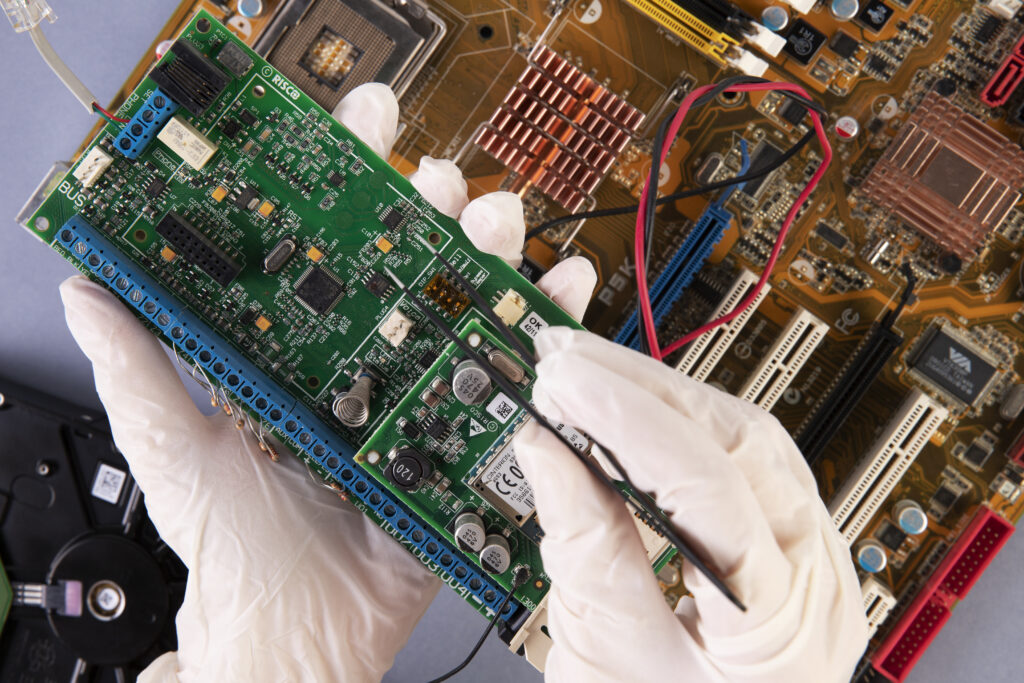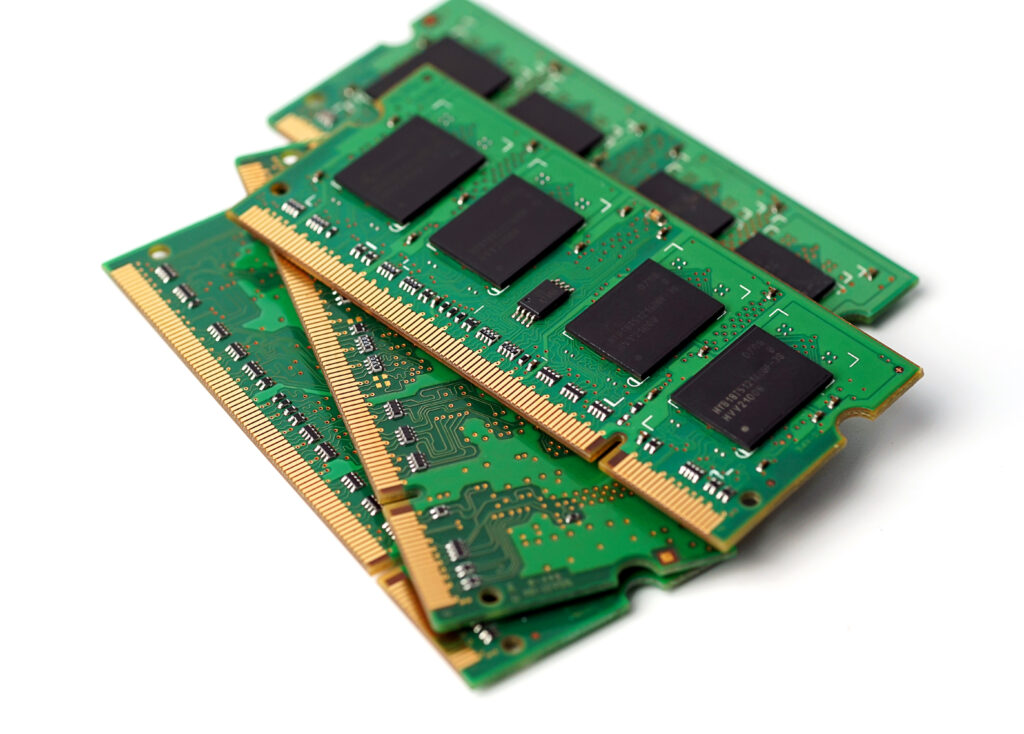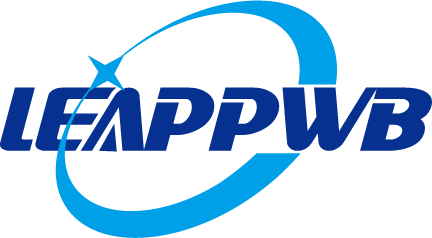Invert PCBs
Premium Inverter PCBs at Competitive Prices
Materials:
- High TG FR4, Ceramic, PTFE, Polyimide
Advanced Features:
- Blind/Buried Vias, Micro Vias, HDI
- Copper Thickness: 0.5-20oz
- Impedance Control, Conductive & Non-Conductive Via Plugging
Surface Finishes:
- HAL, OSP, ENIG, Immersion Gold, Immersion Silver, Immersion Tin, ENEPIG
Certifications:
- ISO9001:2015 Certified & UL Listed
Inverter PCBs are widely used in:
- Automotive and Marine: Powering electronic devices in vehicles and boats.
- Renewable Energy: Converting DC to AC in solar and wind power systems.
- Household Appliances: Efficient power management in devices like air conditioners and refrigerators.
- Electric Vehicles: Driving motors and components by converting battery power.
- Backup Power Systems: Ensuring stable power in UPS and generators during outages.
These applications highlight the versatility and importance of inverter PCBs in modern technology.
Request Your Free Quote Today!
What is a Invert PCBs?
An Inverter PCB is a printed circuit board used in devices that convert DC electric energy (such as from a battery) into alternating current (usually 220V, 50Hz sine wave). The inverter itself comprises an inverter bridge, control logic, and a filter circuit. These PCBs are integral to the functioning of various household appliances, including air conditioners, home theaters, washing machines, and more.
Given the widespread use of automobiles, inverters have become essential for powering electric appliances and tools on the go. Onboard inverters, typically powered through a vehicle’s cigarette lighter, range from 20W to 150W. For higher power needs, larger inverters can be connected directly to a car’s battery, enabling the use of household appliances within a vehicle.
Applications and Advantages of Inverter PCBs
Inverter PCBs play a crucial role in converting DC power (from sources such as batteries, switching power supplies, or fuel cells) into AC power, enabling the operation of various electrical appliances and devices in locations where AC power is unavailable.
Key Benefits:
Versatile Power Conversion: Inverter PCBs allow the conversion of DC power into stable and reliable AC power, supporting a wide range of electronic devices, including laptops, smartphones, digital cameras, and handheld PCs, ensuring they can function in off-grid locations.
Enhanced Mobile Power Solutions: These PCBs are particularly useful in mobile power applications, such as in cars, boats, and portable power supply units, providing the necessary AC power for field use.
Eco-Friendly Power Solutions: When used with generators, inverter PCBs can improve fuel efficiency and reduce operational noise, contributing to more sustainable energy use.
Renewable Energy Integration: Inverter PCBs are essential in renewable energy systems, particularly in wind and solar power setups, where they facilitate the conversion of DC power generated by these sources into usable AC power.
Applications:
Mobile and Portable Power Systems: Inverter PCBs provide AC power in vehicles, boats, and portable devices, making them ideal for outdoor and remote applications.
Renewable Energy Systems: They are integral in solar and wind energy systems, converting generated DC power into AC power for household or industrial use.
Power Backup Solutions: Inverter PCBs are used in conjunction with batteries and generators to ensure continuous power supply during outages, making them crucial for uninterrupted power in critical systems.
Inverter PCBs are indispensable in modern power systems, providing flexibility, reliability, and efficiency across various applications.
Essential Considerations in Inverter PCB Design
Designing a high-power inverter PCB involves several critical decisions to ensure the robustness and efficiency of the system. Here are the key factors to consider:
1. Power Switch Selection
The choice of power switch is crucial in high-power inverter design. Each type of switch has specific characteristics such as voltage limitations, temperature range, and operating frequency that impact the design. The main types of power switches include:
- Silicon MOSFET
- Insulated Gate Bipolar Transistor (IGBT)
- Silicon Carbide (SiC)
- Gallium Nitride (GaN)
2. Operating Voltage Requirements
Assessing the maximum operating voltage the system will encounter is vital. The power switch and gate driver must handle these voltages effectively. Typically, the maximum expected peak voltage should be less than 80% of the power switch’s rated voltage to ensure safety and performance.
3. Protection Mechanisms
Inverter PCB design must incorporate protection mechanisms to handle voltage spikes, heat generation, and efficiency losses. This includes desaturation detection, Miller effect prevention for parasitic connections, and optimized PCB layout techniques to safeguard the system.
4. Application-Specific Requirements and PCB Layout
The application context greatly influences the design. For instance, stable industrial motor inverters may require less protection, while dynamic applications like electric vehicle traction inverters need extensive system safeguards. A well-planned PCB layout minimizes parasitic inductance and capacitance, enhancing performance, efficiency, and reliability.
5. Powering the Secondary Side
Supplying power to the secondary side of the half-bridge device is another critical consideration. This can be achieved either through discrete components or integrated solutions, depending on the design requirements.
When designing an inverter PCB, selecting the appropriate power switch technology, gate driver, and protection solutions is essential for achieving a reliable and efficient system.
Best Practices for Inverter PCB Layout
To ensure optimal performance and reliability of an inverter PCB, it’s crucial to follow these best practices during the layout process:
1. Prioritize Critical Components
Begin by placing components with fixed positions, essential circuit units, and core components first. For elements like tooling holes and connectors, assign them immovable attributes and mark their dimensions to ensure accuracy.
2. Temperature Management
Place temperature-sensitive components away from heat sources. High-heat components should be positioned near air outlets or in locations favorable for convection. Ensure that taller components do not obstruct airflow and that heat sinks are strategically placed to facilitate cooling.
3. Decoupling Components
Position decoupling components close to the power input. RF chips, which are highly sensitive to power noise, should have capacitors and shielded inductors nearby to filter out any noise before power reaches the chip. Proper placement is essential to avoid noise radiation across the PCB.
4. Signal Flow Optimization
Arrange the main components according to the critical signal flow direction, as outlined in the schematic diagram. Ensure that overall trace lengths are minimized, with the main signal trace being the shortest. Reduce the number of vias and separate high-voltage, large-current signals from low-voltage, small-current signals. Additionally, keep analog and digital signals, as well as high and low-frequency components, well-separated.
5. Crystal Oscillator Placement
Position the crystal oscillator as close to the associated chip as possible, but avoid placing it near the edge of the board to minimize noise and interference.
6. Inductor and Magnetic Bead Placement
Avoid placing inductors or magnetic beads side by side, as this can create an air-core transformer and induce interference signals. Instead, maintain a distance greater than the height of one of the components or arrange them at right angles to minimize mutual inductance.
7. Symmetrical Layout for Key Circuits
For circuits such as voltage dividers, differential circuits, or any with similar structures, strive for a symmetrical layout. Group components that share the same power supply to maintain consistency.
8. Aesthetic and Balanced Design
While meeting electrical performance requirements, aim for a layout that is uniform, balanced, and aesthetically pleasing. A well-organized and tidy PCB not only improves functionality but also facilitates easier troubleshooting and maintenance.
Following these best practices will help you create a high-performing, reliable, and efficient inverter PCB layout.
LEAPPCB: Your Trusted Partner for Invert PCBs
In today’s technology-driven world, uninterruptible power supply (UPS) circuit boards have become increasingly complex and vital for ensuring continuous power supply. As reliance on these systems grows, it is crucial to stay updated with the latest advancements in UPS technology. To achieve this, partnering with a UPS PCB manufacturer that offers mature technology and a professional team is essential. Here’s why LEAPPCB is the ideal choice for your UPS circuit board needs:
High-Precision Manufacturing and Testing
At LEAPPCB, we are committed to producing UPS circuit boards of the highest standard. Every UPS PCB we manufacture undergoes rigorous quality assurance processes to ensure it meets the specific requirements of our customers. Our UPS circuit boards are designed to be reliable and deliver exceptional performance in your projects.
Cost-Effective Solutions with Uncompromised Quality
The cost of UPS circuit boards varies depending on the complexity of the circuits and the features they offer. While basic models are available at competitive prices, more advanced options, such as double-conversion and intelligent management systems, are priced accordingly. LEAPPCB is dedicated to providing affordable UPS PCB solutions without compromising on quality. We offer tailored pricing to meet your budget while ensuring top-tier performance.
Timely Delivery
We understand the importance of meeting project deadlines. LEAPPCB is committed to delivering your UPS circuit boards on time, without sacrificing quality. Our efficient production processes ensure that you receive your UPS PCBs promptly, keeping your project on schedule.
No Minimum Order Quantity (MOQ)
At LEAPPCB, we are dedicated to meeting your unique UPS PCB requirements. Whether you need a small batch or a medium-scale production, we offer flexible services to accommodate your needs. No order is too small for us, and we are here to support your project at every stage.
Get Your Free Instant Quote Today!
Leap Electronic is your trusted partner and one-stop shop for PCB fabrication, component sourcing, PCB assembly, and electronic manufacturing. With over 16 years of expertise, we proudly serve over 1000 customers worldwide, delivering top-quality PCBs at competitive prices. Our ISO9001:2015 certification and UL listing ensure that all our products meet the highest industry standards. Every PCB is 100% E-tested and inspected using AOI and X-RAY, guaranteeing unparalleled reliability and performance.
Don’t wait – get an instant quote from our sales team today and experience the Leap Electronic difference. We’ll handle the rest!
Everything You Need to Know About Invert PCBs
An Inverter PCB is a printed circuit board used in devices that convert DC electrical energy (like from a battery) into AC power, typically 220V, 50Hz sine wave.
- Inverter PCBs enable the transformation of DC voltage from power sources into high-frequency, high-voltage AC power for various electronic devices.
An inverter converts 12V or 24V DC power into 240V, 50Hz AC power or other AC forms, ensuring the smooth operation of connected devices.
Key design principles include evaluating power switch types, considering working voltage requirements, planning the application and PCB layout, and determining how to supply power to the secondary side.
Yes, inverter PCBs are repairable and maintainable.
Common components include resistors, capacitors, inductors, diodes, and IC chips.
The required amperage depends on the battery voltage and specific application needs.
Inverter PCBs can be categorized into various types, such as active inverters, passive inverters, off-grid inverters, grid-connected inverters, and more.
Effective heat dissipation is crucial, and inverter PCBs often require heat sinks to manage the heat generated by electrical components.
Inverter PCBs are known for their fast start-up, high conversion efficiency, excellent safety, and stability even under varying voltage conditions.
Inverter PCBs are essential for ensuring reliable power conversion and maintaining the performance of the inverter.
The primary drawback is the high cost associated with manufacturing.
LEAPPCB offers custom inverter PCBs tailored to specific requirements.
Proper thermal management is essential to prevent overheating and ensure the longevity of the PCB.
The process includes cutting and grinding, drilling, copper etching, AOI inspection, solder mask application, and final inspection.
Common materials include CEM-1, CEM-3, and FR-4.
Inverter PCBs must meet certifications like ISO 9001, RoHS/REACH, and UL.
Proper thermal management prevents meltdowns during normal operation.
The price is determined by factors such as base material, dimensions, number of layers, copper thickness, and surface finishes.
LEAPPCB typically provides a lead time of one to four weeks.
LEAPPCB is a leading manufacturer of inverter PCBs, offering high-quality products and competitive pricing.
Orders can be placed by contacting LEAPPCB’s sales team via their official website.
LEAPPCB, located in Shenzhen, China, facilitates international exports with various shipping options.
- Shipment options include DHL, UPS, FedEx, air, and sea, depending on customer requirements.
Consider factors such as the manufacturer’s experience, product quality, pricing, and customer service before purchasing.
LEAPPCB provides comprehensive after-sales support for inverter PCBs.
Inverter PCBs typically have a lifespan of over 15 years in standard environments.
LEAPPCB offers a 12-month quality guarantee on bare PCBs, subject to terms and conditions.
